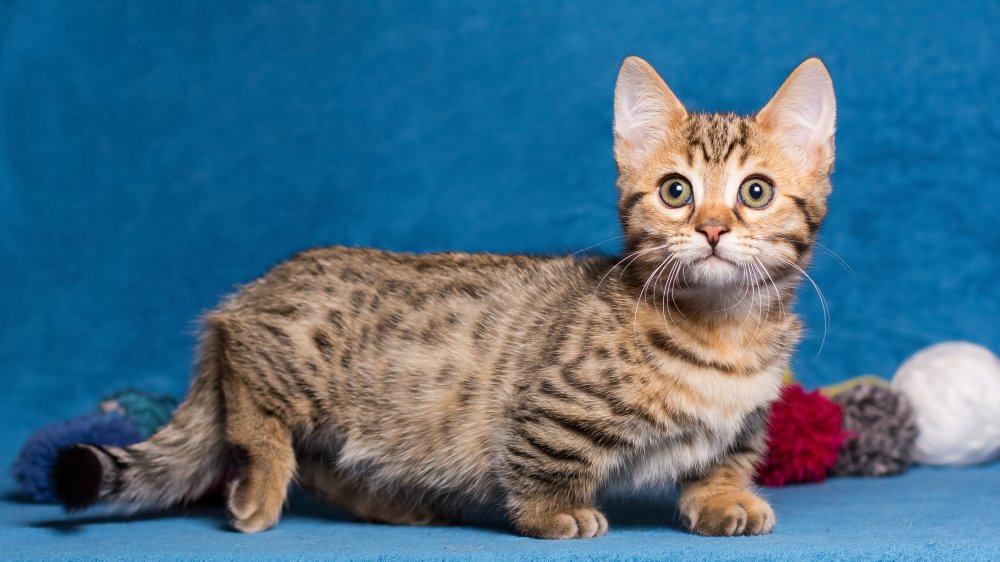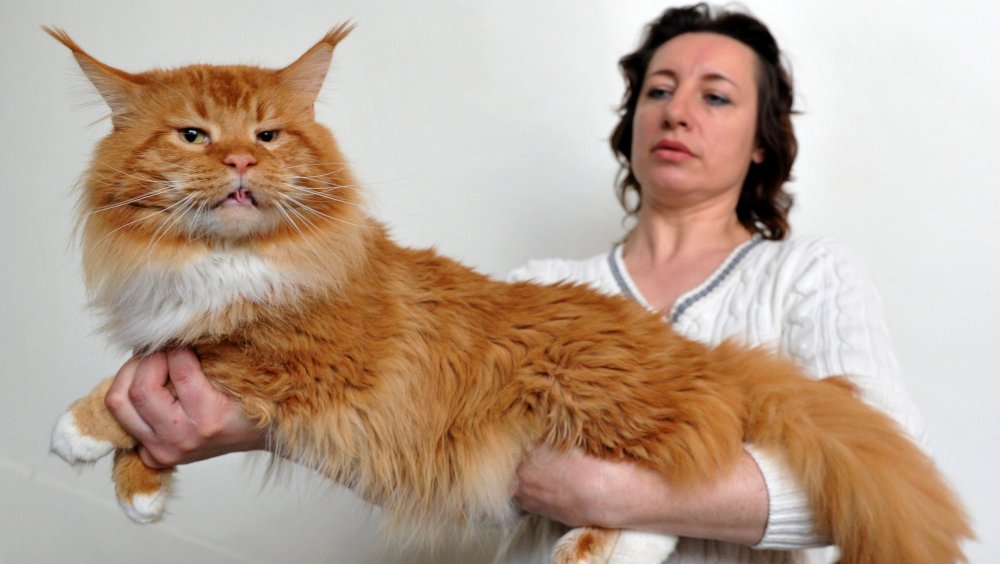The Strangest Cat Breeds In The World
One person's weird is another person's charming eccentricity. One person's quirk is another person's grounds for divorce. One person's pet snake (fetchingly referred to as "Rocky the Boa") is another person's nightmare, and someone's beloved, hairless Xoloitzcuintli might strike another as the world's weirdest dog. So what counts as weird — especially, with cats? It's all relative.
Of all the many different cat breeds, there are certainly some bizarre contenders. Reader's Digest nominates one breed of cat, the Munchkin, which is extremely short-legged (the name is kind of a giveaway) as a result of a "naturally occurring genetic mutation." It doesn't slow them down any, though, unless you're trying to race them, probably. World's Best Cat Litter posits the Sphynx, which has tall ears, a "nearly hairless body," and wrinkles. So there's the possibility that you would wake up in the morning looking at a wrinkly, hairless cat. Something to think about. And if you are thinking about it, maybe the Peterbald is your cup of cat ... er, tea. Also described as "mostly hairless," the Peterbald also has the unique distinction of webbing on their feet. Even without an disposable thumb, Peterbalds have been known to pick up items, or open doors. Which increases the odds of a nearly hairless cat staring at you when you first open your eyes. Just saying.
Maine Coon Cats slowly become enormous
If your heart is large and you just can't pass up the opportunity to love on a genetic mutation, consider a Manx. Little or no tail, because of that spinal mutation, and longer hind legs, giving it more of a "hop" than a "stride" and leading some meanies to suggest it's actually a cross between a cat and a rabbit. And speaking of abbreviated tails, there's also the Japanese Bobtail, which also features longer hind legs and a tail that looks, well, bobbed.
It's hard to talk about unique cat structures without bringing up the venerable Maine Coon, those cats that are almost bigger than their owners. Again, snide critics will tell you it's a cross between a raccoon and a domestic cat, but of course it isn't. They're slow to grow, not fully maturing until they're three or four years old. They're also huge — between 15-25 pounds, and up to 40 inches in length, including tail. Just all the more to love, right?

